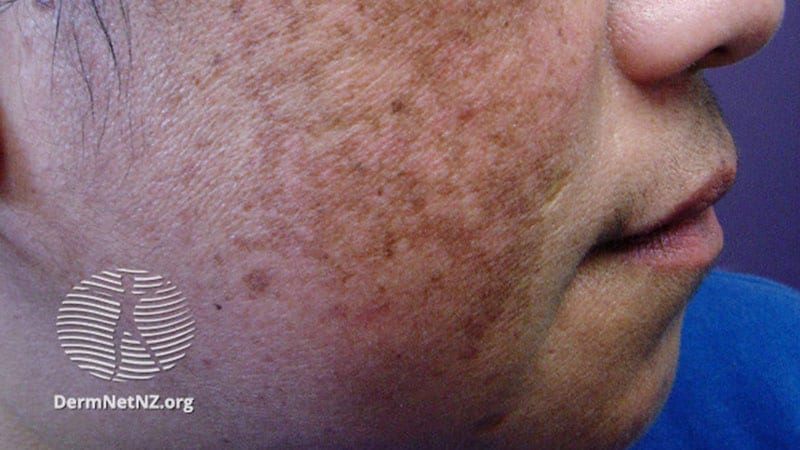TOPLINE:
Exposure to hormones, hyperpigmenting drugs, and giving birth to two or more children was associated with varied risk for melasma across different racial groups, a US study found.
METHODOLOGY:
- Melasma mainly affects women of color disproportionately. While risk factors like UV radiation, family history, and hormones have been identified, few studies have explored these factors in a diverse US population.
- Using data from the Mass General Brigham Research Patient Data Registry and the TriNetX database, representing 40 US health care organizations, researchers identified 27,069 patients diagnosed with melasma after October 2015, who were mostly female (94%). They matched patients by age, sex, and race and calculated combined odds ratios.
- Overall, there were 15,959 White, 3871 Black, 4845 Hispanic, and 2026 Asian individuals.
- The mean age of melasma diagnosis varied across races, with the lowest in White individuals (41.8 years) and highest in Black individuals (53.7 years).
TAKEAWAY:
- Exposure to exogenous hormones was a significant risk factor for melasma for White individuals (odds ratio [OR], 2.22; P < .0001), Hispanics (OR, 2.13; P < .0001), and Black individuals (OR, 1.94; P = .03).
- Exposure to hyperpigmenting drugs was associated with a significantly increased risk for melasma across all races and was the highest in Black individuals (OR, 2.22) and Hispanics (OR, 2.03), followed by White individuals (OR, 2.0) (P < .0001 for all three).
- Multiparity was associated with a significantly higher risk for melasma only among White individuals (OR, 1.9; P < .0001) and Hispanics (OR, 1.57; P < .001).
- The risk increased with each subsequent pregnancy only in Whites: OR, 1.08 with the first pregnancy (P = .15); OR, 1.42 with the second pregnancy (P < .0001); and OR, 1.51 with the third pregnancy (P < .00001).
IN PRACTICE:
The study, the authors concluded, “characterizes racial differences in melasma incidence and risk factors, and also identifies hyperpigmenting drug exposure as a possible new risk factor for melasma.” The latter finding raises “the possibility of drug-induced hyperpigmentation contributing to melasma onset and/or misdiagnosis of drug-induced hyperpigmentation as melasma,” they added.
SOURCE:
The study, by Ethiopia D. Getachew, of Harvard Medical School, Boston, and coauthors from the departments of dermatology at Massachusetts General Hospital and Brigham and Women’s Hospital, Boston, was published online on May 7 in the Journal of the American Academy of Dermatology.
LIMITATIONS:
Lack of data on skin type, ancestry, and drug dosage and duration were some of the limitations of the study.
DISCLOSURES:
The funding source noted that the corresponding author is partially funded by a fellowship from The Dermatology Foundation. Two authors declared several financial ties outside this work. The other authors declared no conflicts of interest.
